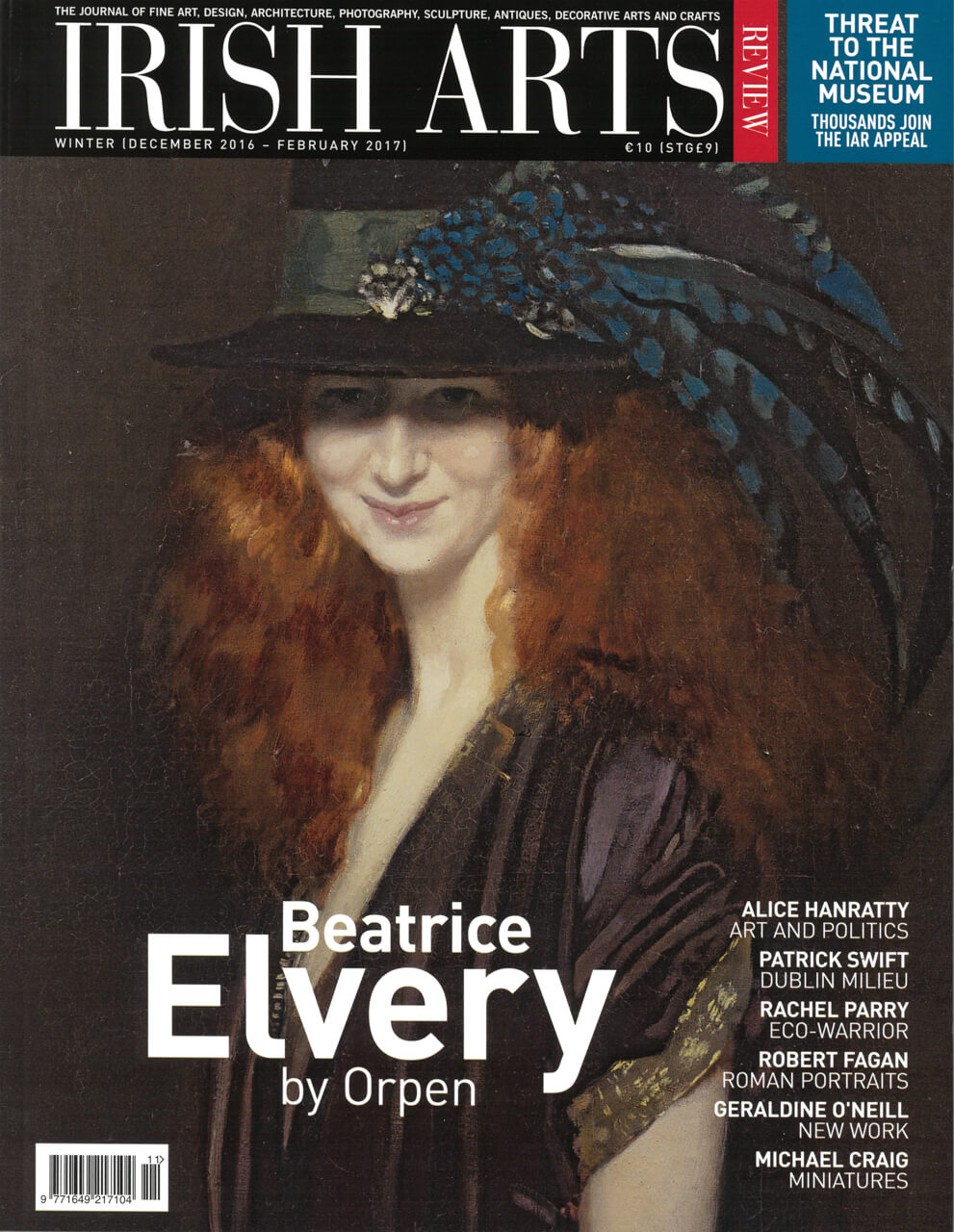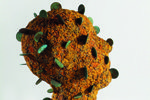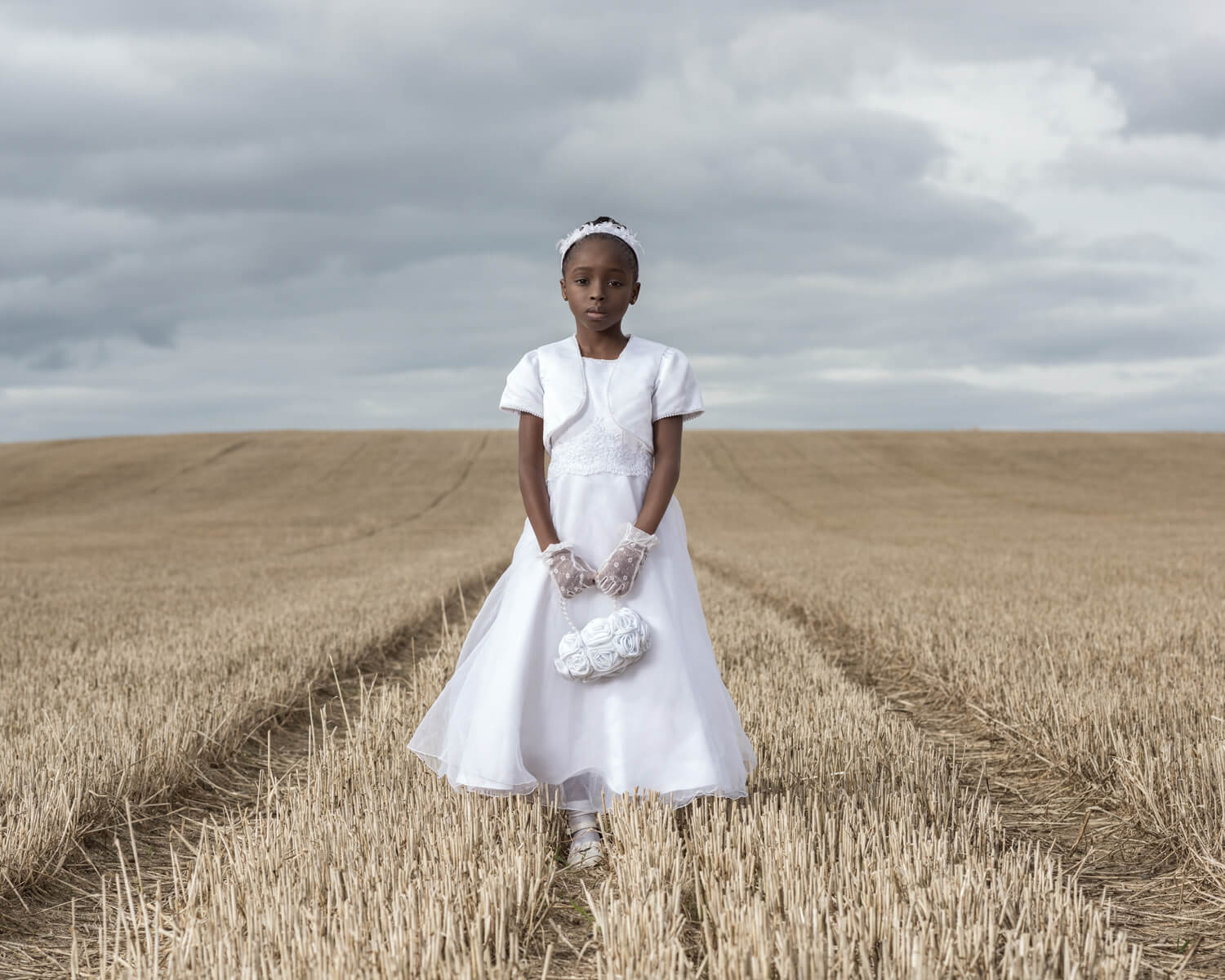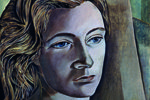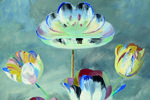
Mairead O’Eocha’s latest series of oil paintings explore the time-honoured genre of flower painting, writes Donal Maguire.
Painting as learning‚’, Mairead O’Eocha asserts; a wonderfully succinct simile expressing her methodology and conceptual approach to making art. For O’Eocha, painting is a process through which information can be filtered, synthesized and clarified in the course of forming a better understanding of a subject or an idea. In her latest series of work, recently exhibited at Mother’s Tankstation, the subject of her focus and study is flowers. This is not in a botanical sense but rather in the pictorial visualization of flowers, and the social and cultural connotations of flower painting in the history of western art.
Focusing on flowers as subject matter for still-life painting, O’Eocha knowingly engages with a genre that traditionally has been viewed as a lesser art form. For 400 years still-life was positioned at the bottom of the hierarchy of genre and associated with commercial, decorative, and amateur painting. These are connotations O’Eocha seems to be drawn to and are evident in her use of formulaic compositions, traditional media, and the domestically friendly scale of her work. Such conventions and traditions are countered, however, by her disparate set of sources. Three of the paintings were begun as traditional still-lifes, based on flower arrangements in her studio. Two draw on different art historical sources for inspiration; Vallyer-Coster Rose (Fig 1) is based on the French 18th-century painter Anne Vallyer-Coster’s exquisite oil, Still-life with Pink Roses in a Glass. The remaining two are a montage of O’Eocha’s own flower studies combined with imagery derived from her imagination.
This forms a degree of variation across the series that is both subtle and intriguing. It is never quite clear as to which elements of a painting are those that have been copied from nature; are an art-historical reference; or are a product of the artist’s imagination. From its point of origin, each painting develops as an individual study, as O’Eocha explores different ideas, values and questions relating to the subject and its history. The result is a series of work that radiates her sense of curiosity and desire to engage with the aesthetics of flower painting and its associated cultural narratives.
Flower painting is a significant genre in the history of women artists. Only this autumn, the Museo del Prado, Madrid unveiled its first exhibition dedicated to a female artist, the 17th-century still-life (and flower painter) Clara Peeters. Until the late 19th century, women were prohibited from attending life-drawing classes and encouraged towards ‘lesser‚’ art forms such as flower painting. Despite these restrictions, women reached impressive heights of artistic achievement. In 1663, Catherine Duchemin (1630-1698) became the first woman member of the Académie Royale de Peinture et de Sculpture for her flower paintings. This was followed, in the mid 18th century, by a number of highly skilled artists, including Vallyer-Coster (1744-1818), who were widely celebrated for their flower-pieces. Conscious of her own position as an Irish woman artist, O’Eocha’s paintings can be seen as a means of directly engaging with this history while also exploring how it relates to the specifics of her own identity and artistic practice.
Aware of painting’s diminished status and relevance as an art form today, there is the sense that O’Eocha has found a way
of making it relevant to her
The traditional themes of temporality and transformation in flower painting are explored in O’Eocha’s work through the mechanics of material process and procedure. Guided by instinct and intuition, as well as her diverse artistic interests, O’Eocha moves quickly away from her original source as her paintings evolve according to different lines of enquiry. ‘I like the uncertainty and continual shifting of the space between conception, intention and intuition [allowing] unconscious and imaginary material to emerge‚’, she says. It is an exercise that is at once highly technical, employing preparatory sketches, studies and colour tests, and utterly spontaneous and open to adjustment. Elements of each painting are reworked, colours altered, and details added as each image moves further away from its original source towards greater intertextuality. Tulips Reingale, Large (Fig 2), based initially on an engraving after Philip Reingale’s Tulips, becomes a vehicle for O’Eocha to explore her personal interest in Bridget Reilly’s colour theory. Alternatively, Ring Flash Bouquet, begun as a still-life from nature, retains no reference in reality whatsoever but for a Japanese figurine adapted as decoration on a vase.
In some works, such as Artichoke and Incense (Fig 3) and Mirror Lillies, O’Eocha pushes the image towards abstraction. Flowers are represented as blobs, dashes and spots of amorphous colour that blend with other elements of the picture. The illusion of space is reduced as the composition becomes increasingly unstable. For O’Eocha, flowers lend themselves inherently to visual abstraction, a trait that also appealed to the impressionists Edouard Manet (1832-1883) and Claude Monet (1840-1926). Highly sensitive to environmental effects, flowerscontinually change their appearance and form as their structure and colour respond to fluctuations in their surrounding environment. This quality is amplified when flowers appear in bouquets and clusters, and is further reflected in the indistinct patterns and shapes formed by the introduction of glass vases and mirrors.
Aware of painting’s diminished status and relevance as an art form today, there is the sense that O’Eocha has found a way of making it (and its history) relevant to her. She paints to make sense of the world, and the things and ideas that surround and affect her. Significantly, one of those things is painting itself.
All images courtesy the artist and mother’s tankstation.
Donal Maguire manages the ESB Centre for the Study of Irish Art at the NGI.
